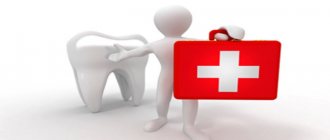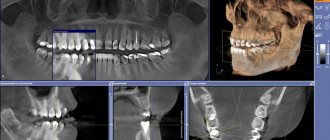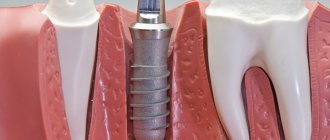Conditions for expensive treatment For whom you can get a deduction Amount of deduction and deadlines for submitting documents Expensive dentistry How to get a deduction for treatment Documents for deduction
To understand in detail what a tax deduction for treatment is, we suggest watching our video.
Using illustrative examples, we tell you who has the right to a deduction, what documents need to be collected for the tax office, for whom you can get a deduction, and how much money you can ultimately return to your account.
The fundamental difference between simple and expensive treatment is the size of the tax deduction. The article “Medical services, medications and expensive types of treatment for tax deduction” lists the types of treatment approved by Decree of the Government of the Russian Federation of April 8, 2020 No. 458.
In order to find out the type of treatment you need, it is not necessary to look for the disease in the long list of the Regulations. Ask the clinic where you were treated for a “Certificate of payment for medical services to be submitted to the tax authorities” and look at the line “service code”.
If the code is No. 1 , it means the treatment was simple. If code No. 2 - expensive.
In a separate article, we described in detail what the “Tax Deduction for Treatment” is. Below we will tell you how to determine whether the treatment was expensive, what this means, what benefits it brings and how to get part of the costs back.
Conditions for obtaining a tax deduction for expensive treatment
- you are a tax resident of the Russian Federation;
- pay income tax 13%;
- the medical institution is registered in Russia;
- the medical institution is licensed;
- prescriptions were prescribed by the attending physician;
- in the Medical Payment Certificate;
- you paid for services and consumables from your own funds, and did not receive them from your employer or from a charitable foundation;
- consumables, the cost of which you plan to include in the deduction, were paid for by you for expensive treatment;
- the clinic does not have the medications and consumables you need for expensive treatment;
- the purchase of medications and consumables at the patient’s expense is specified in the agreement with the medical institution;
- you have a certificate from the clinic stating that consumables were needed for expensive treatment.
The inclusion of expensive consumables in the tax deduction is discussed in clause 2.2 of the Federal Tax Service Letter of August 31, 2006 N SAE-6-04 / [email protected] “On certain issues of providing social tax deductions.”
How do cheap ones differ from expensive ones?
Conventionally, dental implants can be divided into three large groups:
- Premium systems from leading companies. In addition to the production of rods and suprastructures, such companies invest a lot of money in development, histological research, and testing. They create training programs for dentists and continuously improve production technology. Ultimately, this is reflected in the cost, which is quite justified. Such designs include Swedish Astra Tech, German XiVe Friadent, Swiss brands Straumann and Nobel Biocare.
- Mid-segment designs . The second group includes companies that do not make a significant contribution to the development of implantology, but simply repeat the developments of manufacturers of the first group. It is not always possible to recreate an exact copy, so some samples are not entirely successful. However, there are models that, in the capable hands of a surgeon, can last a long period. These brands include the Israeli Alpha Bio and MIS, the American Bicon and the German Ankylos.
- Designs with low functional capabilities . Models in this category are manufactured at small budget enterprises. Such dental systems include Belarusian, Russian and Ukrainian.
- Complete restoration of the dentition in just 4 days!
more detailsRoott Pterygoid Implants Sinus lift is no longer needed!
more details
Once and for life! Express implantation in 4 days with a permanent ReSmile prosthesis
more details
All-on-4, All-on-6, ReSmile, Zygomatic implantation We use all modern methods of dentition restoration
more details
For whom can you get a deduction?
A common situation is when one person in a family is treated, and the other pays for it. This often happens to elderly parents, because paying tens of thousands of rubles for joint surgery or therapy for a serious illness is an unbearable burden for a pensioner.
In Art. 219 of the Tax Code of the Russian Federation defines a list of relatives for whom you can receive a tax deduction if you paid for their treatment:
- husband wife;
- children under 18 years of age;
- parents.
If you are paying for yourself or for relatives from the above list, an agreement with the clinic can be concluded for any of you. The main condition is that there must be documentary evidence that it was you who incurred these expenses.
What you can and cannot save on during treatment
The professionalism of the doctor and the quality of the materials used are directly dependent on the pricing features of the clinic. List of acceptable ways to save:
- Buy health insurance. Sometimes clinics provide discounts to patients who are treated under insurance programs.
- You can refuse a temporary artificial crown if the chewing area is being prosthetized.
- Perform implantation on several teeth at the same time. This will help save on making impressions, anesthesia and x-rays.
Deduction amount and deadlines for submitting documents
So, you have determined that you are entitled to a tax deduction and that the treatment was expensive. How much money can you get back?
For expensive treatment, unlike simple treatment, the upper tax deduction limit has not been determined. You have the right to a refund of 13% of all your expenses (subclause 3, clause 1, article 219 of the Tax Code of the Russian Federation).
You are allowed to contact the inspectorate and submit a 3-NDFL declaration with an application for a deduction at the end of the tax period, that is, next year after payment. The calculation takes into account the calendar year from January 1 to December 31.
If you paid for treatment in 2022, then documents must be submitted no earlier than 2022. The deduction can be received within three years from the date of payment, so in our example it is 2022, 2023 or 2024.
Remember! Regardless of how much money you spent on expensive treatment during the year, the refund amount cannot be more than the personal income tax you paid for that year. The remainder does not carry over to the next year and is burned.
Information on the amount of transferred income tax is contained in the 2-NDFL certificate from your work. This document, like other mandatory documents, is submitted to the Federal Tax Service at your place of residence.
What does the final price consist of?
The final cost of implantation depends on the costs at each stage:
- The preparatory stage includes sanitation of the oral cavity, consultations with specialists, and collection of samples.
- The diagnostic stage involves an orthopantomogram and computed tomography.
- If there is insufficient bone tissue, directed regeneration, sinus lifting or bone block grafting is performed.
- Surgical stage. The doctor forms a bone bed, screws in the implant and sutures the mucous membrane.
- After 3-5 months, the gum former is installed. To do this, the doctor dissects the mucosa, removes the temporary plug, and installs the former.
- After 2-3 weeks, when a cushion of gum tissue forms, the former is removed and an abutment is installed in its place.
- Prosthetics. Impressions are taken from the jaws, from which artificial crowns will be created in a dental laboratory.
- Fitting, correction, fixation of the structure in the oral cavity.
- Rehabilitation. The patient regularly visits the dentist to monitor the functionality of the prosthesis and the condition of the tissues.
Expensive dentistry
The most popular question is what dental service is considered an expensive treatment? Is it possible to get a tax deduction for all expenses for prosthetics, braces or dental treatment?
Let's turn to the Decree of the Government of the Russian Federation of April 8, 2020 No. 458, which defines a list of expensive types of treatment.
It contains point 1:
Medical services for orthopedic treatment of the population with congenital and acquired defects of teeth, dentition, alveolar processes, jaws supported by dental implants in the absence of conditions for traditional dental prosthetics (significant atrophy or defects of the inert tissue of the jaws).
This is the only indication of a service that can be classified as dentistry. Or rather, to surgical dentistry for implantation of dentures.
Let's summarize: no matter how much money you spend on prosthetics, installation of braces or dental treatment, only the operation of implanting dentures is an expensive type of treatment . And only for it and for the implants you can get a tax deduction for the entire amount.
All other dental services are classified as simple treatment with code No. 1 with a maximum tax deduction of 120 thousand rubles and a payment of 15.6 thousand rubles (13% x 120 thousand rubles).
Remember that the amount of all social deductions, including treatment, cannot exceed 120 thousand rubles.
Why are dental implants so expensive?
There are now more than 300 brands of dental implants. Production, research and development and materials require high costs, so products cannot be cheap. Important indicators in the manufacture of implantation systems:
- Material . Typically, artificial roots are made from titanium alloy Ti-6Al-4V, which contains a small amount of aluminum and vanadium. Impurities give titanium strength, but slow down osseointegration (the process of fusion of the implant with the jaw bone). Manufacturers of premium structures use pure titanium 4 (G4Ti), which does not contain impurities. Metal-free ceramics and an alloy of zirconium dioxide with titanium are also used as materials. Ceramic rods are suitable for people with diseases of the mucous membrane and allergic reactions to metal.
- Surface type . The implant surface is an important factor responsible for the rate of osseointegration. Basic surface treatment consists of sandblasting with titanium oxide or alumina and acid etching. This technology has the international name SLA and provides a rough, porous surface. After treatment, the surface can be coated with various chemical compounds that accelerate the synthesis of bone tissue. These compounds include calcium phosphate, fluoride ions and phosphorus.
- Implant shape and thread types . When choosing an implant, the shape and type of thread are essential. Each model interacts with the jawbone differently. There are 4 types of bone: D1, D2, D3 and D4. D1 is the densest type, D4 is the softest. High-density bone provides good primary stability but has fewer blood vessels, so osseointegration will occur more slowly. The softest type D4 is a poor option for implantation. The most favorable bone types are D2, D3.
For dense bone, cylindrical and conical implants are suitable. Too coarse carving is contraindicated in this case, since high tension in the bone will promote atrophy. It is good when the microthread is cut in the neck of the rod, and in its lower part the thread is moderately pronounced. For soft types of bone, conical-shaped structures with self-tapping threads are suitable.
The dental system is selected depending on the density and volume of the alveolar process of the jaw, the place of implantation (aesthetic or chewing zone), and the method of prosthetics.
How to get a deduction for treatment
The process of applying for a tax deduction for expensive treatment is no different from the general rules. The main thing is attentiveness, scrupulous collection of documents and correct filling out of the 3-NDFL declaration.
On the one hand, nothing complicated. On the other hand, even a minor mistake can lead to you having to start all over again. Considering that tax authorities take three months for a desk audit, incorrectly completed documents will stop the process and you will waste time.
What will you get if you register in the online service NDFLka.ru:
- We will compile for you a list of documents you need;
- We will check the correctness of the design;
- We will fill out the 3-NDFL declaration for you or help you do it yourself;
- We will send you two electronic formats of 3-NDFL: XML and PDF, so that it is convenient for you to submit the declaration to the Federal Tax Service;
- or we will send 3-NDFL to the tax office ourselves using your electronic signature;
- We will be in touch until you receive the money in your bank account.









